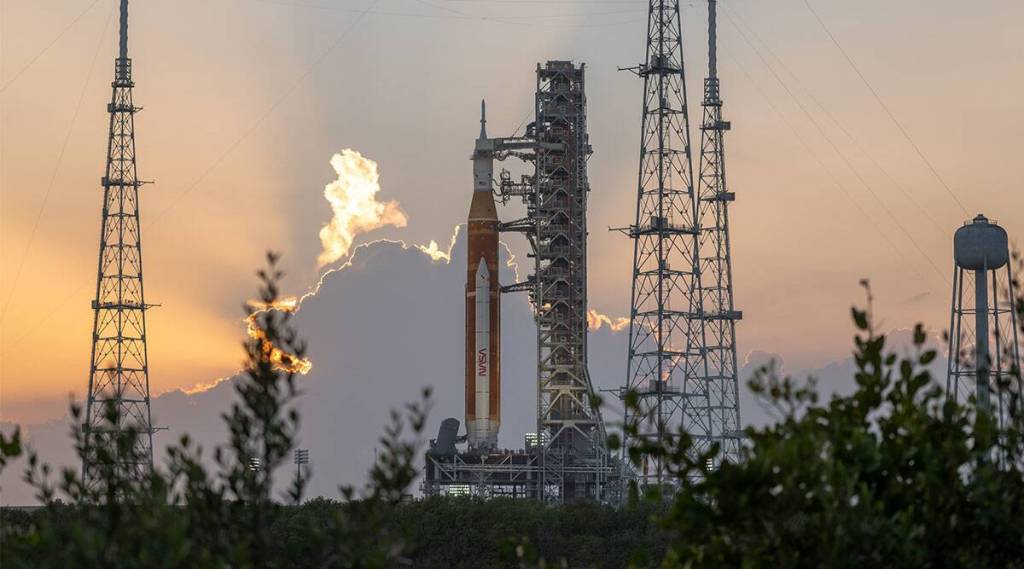NASA’s ambitious Artemis mission is yet to take off. After much delay and repeated failed attempts, the Us0Based space agency is all set to make its third mission in sending its Space Launch System (SLS) rocket to the lunar surface on November 14, it said in an official statement on Wednesday. Weeks of unfavorable weather conditions and technical faults in the system acted as a spoiler for the launch.
The 32-story-tall SLS rocket and the Orion capsule that its payload, the Orion Capsule will be brought back to the Launch 39B at NASA’s Kennedy Space Center in Cape Canaveral, Florida by November 4 to renew operations for Nov 14 take off.
Artemis-1 will have a 69-minute launch window. The take-off starts at 12:07 a.m. EST (1707 GMT) on Nov. 14, NASA stated. The uncrewed flight test will thoroughly test SLS’s adaptability to carry astronauts to the lunar surface in another crewed mission. The agency’s last lunar mission was with Apollo, almost half a century back.
“Teams will perform standard maintenance to repair minor damage to the foam and cork on the thermal protection system and recharge or replace batteries on the rocket, several secondary payloads, and the flight termination system.” the statement said.
Also Read: India’s space economy expected to be worth USD 12.8 billion by 2025: Report
NASA has requested backup launch opportunities in case the rocket fails to take off again on Nov 14 for Wednesday, Nov. 16, at 1:04 a.m. and Saturday, Nov. 19, at 1:45 a.m. If everything goes well this time, Artemis mission will be onboard for 25 and a half days with a splashdown in the Pacific Ocean on Dec. 9.
NASA has previously identified a hydrogen fuel leak that forced it to scrap the last countdown three hours before its take off and it couldn’t be resolved. Later, Hurricane Ian forced the stack of NASA’s Artemis 1 satellite to be returned to the facility where it was assembled. This natural calamity prevented a late September launch.
Named after Apollo’s twin sister Artemis, the Greek god according to mythology, Artemis has been designed to ply astronauts to moons and return them to the moon’s surface as early as 2022, though experts are skeptical about the exact time frame.
NASA also aims at establishing a long-term base of operation on the lunar soil as a stepping stone to crewed missions to the red planet, Mars.


